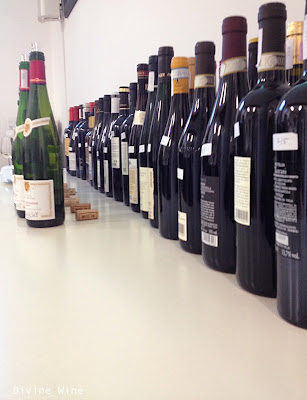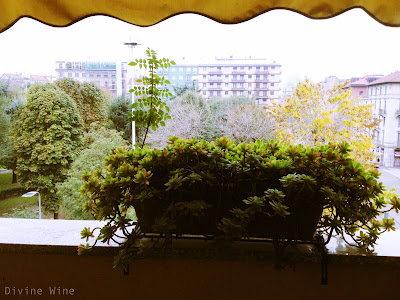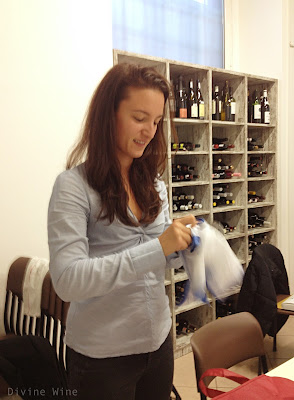It’s your
time to shine, orange wine
What are
the very first signs of Spring? For a Finnish wine lover they are the
increasing amount of day light that makes snow glitter, and wine bloggers’
predictions of upcoming wine trends. My contribution to that discussion can be
condensed into two words: orange wine.
Orange wine
is making its way forward as a part of natural wine movement. Despite of the criticism
regarding their durability, natural wine, similar to all natural and organic in
the food and beverage world, is very hip at the moment. During the recent
years, orange wine has increasingly attracted the interest of dedicated wine
lovers. Finland, however, still remains virtually untouched by this style’s
influence. My prediction is that in 2016 orange wine arrives in Finland, and
becomes more mainstream among wine lovers elsewhere.
This
spring, Divine Wine blog celebrates orange wine with a series of stories. I
will start with introducing you to the basics of orange wine. Subsequently, a
number of divine orange wines will be reviewed and a wine bar specializing in
orange wine recommended. But most importantly, we will continue our vinous
journey in the border region of Italy, Slovenia and Croatia, the current
heartland of orange wine in Europe. There, I’ll take you to visit an iconic
orange wine producer, Gravner. What an excitingly orange spring, dear vinous
friends! This time I’ll review the basics of orange wine, and next time we’ll
progress into more historic layers to understand the phenomenon.
What is
orange wine?
The term ”orange
wine”, was created by David Harvey, a wine importer, who used to work at
Cornelissen in Sicily, Italy. Cornelissen made orange wine but a proper
descriptor for the style was lacking. Not really intending to create a new concept,
Harvey just described the product as orange wine. Incidentally, however, the
wine loving audience found this term handy, and orange wine has remained in
wine vocabulary ever since. Still, it should be noted that orange wine is not
an official wine term. This is because orange wine is technically white wine.
So, what
makes a white wine orange wine? The answer lies in the orange winemaking
technique, which is very similar to red winemaking. During making an ordinary
white wine, the juice is pressed out of the grapes, and the grape skins and the
seeds are discarded right away. Red wine making is quite different, as red
grapes are crushed to release the juice but the skins and the seeds are left to
macerate in contact with the grape juice created. While this maceration, a.k.a.
skin contact, continues, colour, tannin and flavour components are released
from the skins and seeds to the juice/wine. How long this skin contact is
allowed to continue depends on the grape variety and the style of wine aimed for.
For example, very thick skinned grape varieties with abundant tannin should not
be macerated for too long to avoid overtly tannic, astringent and austere wine.
Typically, the maceration time for red wine is around a couple of days.
Orange wine
is made with prolonged skin contact (as red wine is) but of white grapes (as
white wine is). Compared with red grapes, white grapes have substantially less
colour, tannin and flavor components in their skins, hence orange wine
producers may let the maceration continue for ten days, for months, even for years.
This kind
of prolonged skin contact releases colour and tannin from the skins along with
bitter components from the skins and especially the seeds. The final colour may
be anything from deep gold, via amber, to brown. Also, the structure of an
orange wine differs profoundly from ordinary white’s structure due to the
presence of tannin. Not all grape varieties are suitable for prolonged skin
contact. Only a few grapes are able to give birth to balanced orange wines that
are refreshingly acidic, yet tannic, and elegantly aromatic.
The
characteristics of a variety, as well as the optimal ripeness of the grapes are
emphasized by the long maceration time. Should the variety be very aromatic,
there is a danger of aromas overwhelming the wine’s balance. If the grapes are
too ripe, there simply isn’t enough acidity left to carry the weight of the
tannin. Somewhat under-ripe grapes won’t work either: the bitter components
released from the seeds as well as the skins will dominate the wine’s flavour,
again throwing the wine out of balance. As a style, orange wine is not for the
faint hearted. Producers undertaking this challenge need true skill and
determination to accomplish a wine that is elegant. Natural wines have received
criticism due to the unpredictability of their quality and durability.
Orange wine
is not free of this criticism either, although tannin is a natural preservative,
hence supporting the idea of making orange wine naturally. Although there are
controversial orange wines of unpredictable quality in the market, the majority
of orange wines I’ve tasted are a pure delight. The best producers of orange style
make wine that competes in elegance and quality with the world’s greatest
wines.



